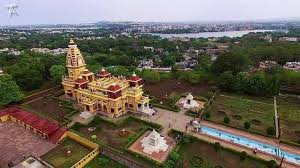In the twenty five years since the formation of Chhattisgarh, Bastar district has witnessed a quiet agricultural transformation driven by steady expansion of irrigation infrastructure. What began with 38 minor irrigation schemes prior to statehood, covering just under 9,000 hectares, has now grown into a network of 92 projects irrigating more than 32,600 hectares of farmland. The change has not only expanded water access but has also seeded economic resilience among thousands of tribal and smallholder farmers.
Since statehood, the construction of 54 new irrigation projects has added over 23,700 hectares of irrigated land, including 18,129 hectares for Kharif crops and 5,620 hectares for Rabi cultivation. These new assets have made double cropping a viable reality in many parts of the region, enabling farmers to diversify and increase their annual income.
The development of medium and minor irrigation projects such as Kosarteda, Bedarmunda, and Tikralohanga, along with Kumharawand, Baniyagaon, and Bhaluguda lift irrigation works, has significantly increased cropping intensity. Similarly, the Mooli and Kawaras diversion plans, along with the construction of 46 additional anicuts and stop dams, have improved water availability for cash crops such as maize, pulses, and vegetables. Today, Bastar’s farmers are reaping the benefits of this infrastructure with round the year cropping cycles that were once impossible.
Farmers like Damrudhar Kashyap and Peeluram Baghel of Kesarpal village, who benefit from the Kosarteda reservoir, report rising earnings through vegetable and maize cultivation during the Rabi season. These are the visible outcomes of long term investment in public infrastructure.
According to the Water Resources Department’s TDP Division in Jagdalpur, an additional 42 irrigation projects worth Rupees 195.36 crore are currently under construction. Once completed, these will bring another 6,790 hectares under irrigation, further expanding the district’s productive capacity and agricultural security.
From dependable water supply to higher incomes and food security, the story of irrigation in Bastar encapsulates the broader promise of Chhattisgarh’s rural progress, development that grows from the ground up and brings prosperity to those who cultivate the land.




